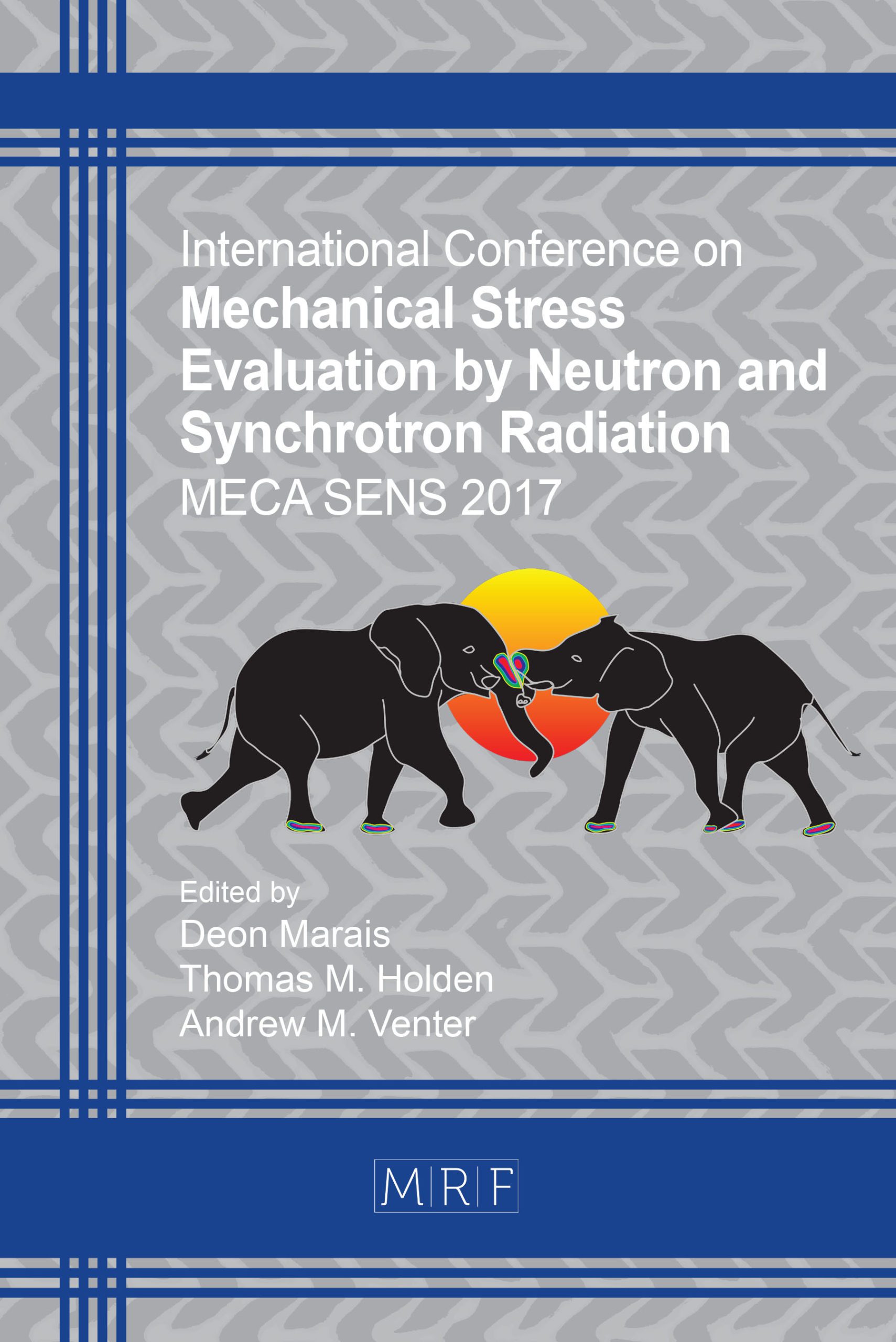Fast Temporal and Spatial Resolved Stress Analysis at Laser Surface Line Hardening of Steel AISI 4140
D. Kiefer, J. Gibmeier, F. Beckmann
download PDFLocal and temporal strain and stress evolution is recorded by synchrotron X-ray diffraction during laser line hardening of SAE 4140 steel in the quenched and tempered states at different measuring positions with respect to the process zone. The in-situ diffraction experiments were performed at beamline P05@Petra III at DESY, Hamburg (Germany). The steel samples were line hardened using a 4 kW high-power diode laser (HPDL) unit at a constant laser feed of 800 mm/min. Using a specially designed process chamber that incorporates symmetrically attached fast silicon micro-strip line detectors, stress analysis using the sin²ψ-method in single-exposure mode, enabled measuring rates at 20 Hz. As a result of the temporal and spatial resolved analyses, the elastic strains were separated from the thermal strains.
Keywords
Laser Hardening, X-ray Diffraction, Synchrotron Radiation, Real Time Stress Analysis
Published online 4/20/2018, 6 pages
Copyright © 2018 by the author(s)
Published under license by Materials Research Forum LLC., Millersville PA, USA
Citation: D. Kiefer, J. Gibmeier, F. Beckmann, ‘Fast Temporal and Spatial Resolved Stress Analysis at Laser Surface Line Hardening of Steel AISI 4140’, Materials Research Proceedings, Vol. 4, pp 91-96, 2018
DOI: http://dx.doi.org/10.21741/9781945291678-14
The article was published as article 14 of the book
![]() Content from this work may be used under the terms of the Creative Commons Attribution 3.0 licence. Any further distribution of this work must maintain attribution to the author(s) and the title of the work, journal citation and DOI.
Content from this work may be used under the terms of the Creative Commons Attribution 3.0 licence. Any further distribution of this work must maintain attribution to the author(s) and the title of the work, journal citation and DOI.
References
[1] T. Miokovic, V. Schulze, O. Vöhringer and D. Löhe, Auswirkung zyklischer Temperaturänderungen beim Laserstrahlhärten auf den Randschichtzustand von vergütetem 42CrMo4, HTM 60 (2005) 142-149. https://doi.org/10.3139/105.100334
[2] K. Obergfell, V. Schulze and O. Vöhringer, Simulation of Phase Transformations and Temperature Profiles by Temperature Controlled Laser Hardening: Influence of Properties of Base Material, Surface Engineering 19 (2003) 359-363. https://doi.org/10.1179/026708403225007572
[3] K. Müller and H.W. Bergmann, Suitability of materials for laser beam surface hardening, Z. Metallkunde, 90 (1999) 881-887.
[4] P. De la Cruz, M. Odén and T. Ericsson, Effect of laser hardening on the fatigue strength and fracture of a B–Mn steel, Int. Journal of Fatigue 20 (1998) 389-398. https://doi.org/10.1016/S0142-1123(98)00010-3
[5] E. Macherauch and P. Müller, Das sin2ψ Verfahren der röntgenographischen Spannungsermittlung, Z. angew. Phys. 13 (1961) 305-312.
[6] D. Kiefer, J. Gibmeier, F. Beckmann and F. Wilde, In-situ Monitoring of Laser Surface Line Hardening by Means of Synchrotron X-Ray Diffraction, Mat. Res. Proc. 2 (2016) 467-472.
[7] V. Kostov, J. Gibmeier, F. Wilde, P. Staron, R. Rössler and A. Wanner, Fast in situ phase and stress analysis during laser surface treatment: A synchrotron x-ray diffraction approach, Rev. Sci. Instrum.83 (2012) 115101 1-11. https://doi.org/10.1063/1.4764532
































